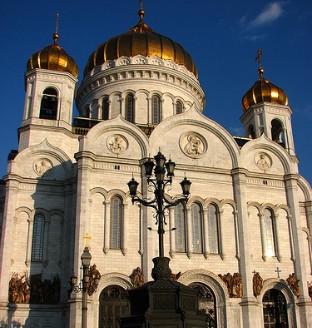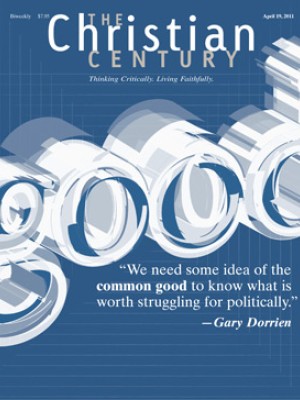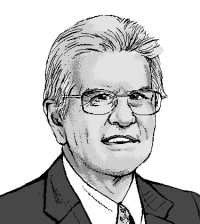Resurrected cathedrals

Imagine a terrifying alternative history of modern Europe: suppose that the Nazis had not only controlled the whole continent but also unleashed a dreadful persecution of the Christian churches. They demolished or desecrated the best-loved monuments of the Christian heritage—St. Peter's in Rome, Notre Dame in Paris, the cathedrals of Canterbury and York. Then, decades later, with the tyranny somehow overthrown, the restored churches begin to restore their lost buildings. The 21st century becomes a new great age of cathedral building, as St. Peter's and the others rise from the rubble. Critics wonder whether the epic restoration scheme rests on any true spiritual foundations, while others argue that resources could be much better employed. But for all the negative sentiment, contemporaries marvel at the soaring affirmations of a reborn faith.
Although that story may seem farfetched, it is a reasonable facsimile of what has occurred in Russia and other nations of the former Soviet Union, which between 1917 and 1941 carried out one of the most savage persecutions in the entire history of Christianity. The Bolsheviks murdered and tortured tens of thousands of clergy, while millions of ordinary believers were slaughtered or starved to death.
Read our latest issue or browse back issues.
The war against God entered a new phase in the 1930s. Determined to prove that religion had wholly lost its grip on the human mind, the Bolsheviks sought to eliminate the most telling visual symbols of the faith, above all the great cathedrals. Dynamite toppled Moscow's huge Cathedral of Christ the Savior in 1931, in an act proudly recorded in propaganda films. The site later became an open-air swimming pool. In 1936, Stalin ordered Red Square cleared of churches, which meant doom for the beloved cathedral church of the Virgin of Kazan. As the assault continued around the country, it claimed such cultural treasures as Odessa's Spaso-Preobrazhensky Cathedral and the Alexander Nevsky Cathedral in Krasnodar. Some houses of worship survived but found humble new roles as warehouses. Although the pressure on the Orthodox Church lightened somewhat after World War II, that was chiefly because the communists no longer saw religion as any kind of serious rival.
The secular utopia staggered on until 1991, when, seemingly miraculously, communism itself collapsed. And at that point, the Orthodox churches began their resurrection. Through this era, the Russian church was led by Patriarch Alexei II (1990–2008), a controversial but extraordinarily significant figure in modern Christian history, one who deserves to be far better known worldwide than he is. Not least, Alexei presided over a revival of Russian monasteries, as great houses famous in the time of Dostoevsky returned to vigor.
Nothing better illustrates the Orthodox revival than the restoration of the cathedrals and churches, a process already well under way even before the formal end of the Soviet regime. Already by the end of 1990, the cornerstone was laid for Moscow's restored Cathedral of Christ the Savior, which was consecrated in 2000. The resurrected building complex has provided an awe-inspiring venue for major national events, including the canonization in 2000 of the last czar and his family. But Christ the Savior is only a small part of the national construction boom, which has rebuilt Kazan Cathedral in Moscow, the Nevsky in Krasnodar and many lesser counterparts. In Ukraine, too, the Orthodox reclaimed their patrimony, as a renewed Spaso-Preobrazhensky Cathedral rose in Odessa.
The restoration was, of course, part of a much larger story rooted in the complex interplay of church-state politics. In Soviet times, Patriarch Alexei himself had had a longstanding working relationship with the state's secret police, the KGB. Although Russia's postcommunist regimes followed democratic forms, they were in practice increasingly authoritarian, and they sought new ideological justifications for their power. Particularly under Vladimir Putin, Russia's effective leader since 1999, the government has stressed a nationalism rooted in the nation's religious past. The church has a natural role in such a vision and readily provides ritual and ceremonial functions for the state. When Boris Yeltsin died in 2007, he lay in state in Christ the Savior Cathedral. Putin himself affects a pious stance.
The church hierarchy operates "in symphony" with Russian governments, and in turn the state has offered the church many rewards. Particularly treasured is legislation designed to discourage nontraditional religious intruders who might challenge the Orthodox hegemony. Western evangelicals and Pentecostals are the main sources of concern. And it is in this context of genial church-state harmony that we should see the enthusiasm about rebuilding the cathedrals.
Although the dark side of the Russian church's new power is apparent, it is difficult not to be awed by the scale of the historical reversal it represents. Even in 1980, hardly any sane person would have predicted the mass rebuilding of Russia's ruined cathedrals and churches. Never say never.






